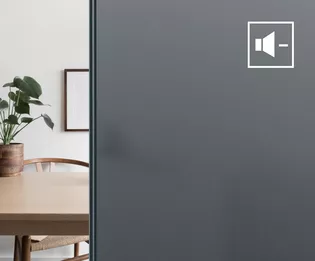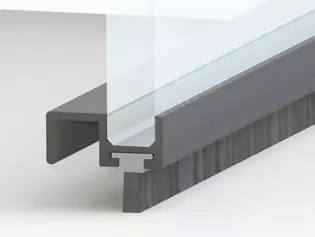Glass doors soundproofing
How sound-insulating a glass door is depends on how tightly it is sealed. Insufficiently sealed door frames can be easily retrofitted. You can find out what options are available here.

As a material, glass has a significantly higher density than wood or wood-based materials. The denser a material, the less it conducts sound. This means that a glass door as a room door has the best prerequisites for sound insulation - it must be tightly sealed.
Because: If the sound still reaches the adjacent room when the door is closed, it is not the glass itself that is responsible, but the fact that the door is not tight. Either the door frame is poorly sealed or the gap between the end of the door leaf and the floor is too large.
Find leaks on the glass door
The lower gap of the glass door between the floor and the door leaf is often a few millimeters wide and can already be seen with the naked eye. It goes without saying that the glass door is therefore not soundproof. But places on the door frame that are not well sealed also prevent optimal sound insulation. Since these spots are not immediately obvious, the best time to check for leaking door frames is in the evening, when it is dark. Simply turn off the light in the room you are standing in and leave it on in the other adjacent room. Where light rays shine through, sound comes through as well as air.
Renew glass door seals
Tightly closing door frames make the glass door soundproof. If there are leaks on the side or on the floor, sounds can penetrate unhindered. By using rubber seals on the door frame, glass doors can be easily retrofitted. The rubber seals are easy to install on the door. As a rule, they are self-adhesive and can be easily cut to fit.
Seal the lower gap of the glass door
The gap between the door leaf of the glass door and the floor can be quite large. To seal this place, there are rails made of plastic or rubber, which you can put on the door leaf. They have a rubber lip that is flush with the floor, thus sealing the door tightly. Some rails are also made of foam or bristles, although rubber seals provide the best sound insulation.
